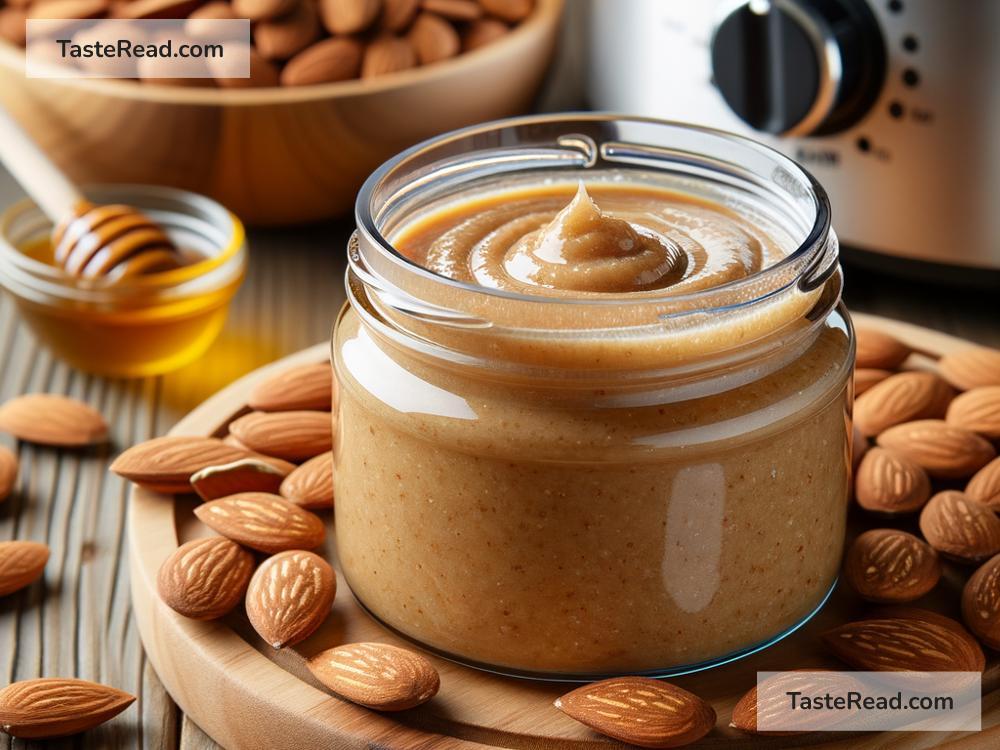How to Make Creamy Almond Butter at Home
There’s nothing quite like homemade almond butter. It’s smooth, rich, and completely customizable to suit your taste. Plus, it’s surprisingly simple to make! If you’ve ever wondered how to create creamy almond butter from scratch, this article walks you through the process step by step.
Whether you want a healthier spread for your morning toast or a tasty dip for fruits and veggies, almond butter is a versatile treat that’s worth making at home. Let’s get started.
Why Make Almond Butter At Home?
Homemade almond butter has several advantages over store-bought versions:
-
Control the Ingredients: Most commercial almond butters include added oil, sugar, salt, or preservatives. When you make it at home, you can decide exactly what goes into the jar.
-
Cost-Effective: Buying almonds in bulk and making your own almond butter is often cheaper than purchasing pre-made jars.
-
Freshness: Homemade almond butter is fresh, flavorful, and free of artificial stuff!
What You’ll Need
Ingredients:
– 2 cups of raw almonds (or roasted almonds, depending on your preference)
– A pinch of salt (optional)
– Optional add-ins: honey, maple syrup, or coconut oil for sweetness; cinnamon or cocoa for flavor
Equipment:
– A food processor or high-speed blender
– A spatula
– A baking sheet (if roasting almonds)
– A storage jar
That’s it! Simple equipment and a handful of ingredients are all you need.
Step-by-Step Instructions to Make Creamy Almond Butter
1. Choose Your Almonds
You can use raw almonds for a natural taste, or opt for roasted almonds for deeper flavor. If you’re starting with raw almonds and want to roast them yourself, here’s how:
- Preheat your oven to 350°F (180°C).
- Spread the almonds in a single layer on a baking sheet.
- Roast for 8–12 minutes, stirring halfway through, until they’re fragrant and slightly darker in color.
- Let them cool completely before blending.
Roasting enhances the warmth and nuttiness of the almonds, but this step is optional. Raw almonds work just as well if you prefer their milder flavor.
2. Blend the Almonds
Place the cooled almonds in your food processor or blender. Pulse a few times to break the nuts into smaller pieces, then start blending continuously.
You’ll notice that the almonds go through several stages:
- Ground Almonds (1–2 minutes): First, the almonds will turn into coarse crumbs.
- Clumpy Mixture (3–6 minutes): Soon, the oils will begin to release, forming a thick, chunky paste.
- Smooth and Creamy Butter (7–15 minutes): Eventually, the mixture will become silky and smooth.
Be patient; this process can take anywhere from 7 to 15 minutes depending on your food processor or blender. Stop every few minutes to scrape down the sides of the container with a spatula so everything blends evenly.
3. Add Flavor (Optional)
Once you’ve reached the creamy stage, it’s time to customize your almond butter. You can leave it plain, or mix in any of the following:
- Salt: A small pinch to enhance the natural flavors.
- Sweeteners: A drizzle of honey, maple syrup, or agave for a touch of sweetness.
- Spices: Cinnamon, nutmeg, or cocoa powder for added flavor.
Start with small amounts, then adjust based on your taste preferences.
4. Blend Again
If you’ve added flavorings, blend the almond butter for another minute or two to ensure everything is well-incorporated. You’ll end up with creamy, smooth almond butter that’s perfect for spreading, dipping, or drizzling.
5. Store Your Almond Butter
Transfer your almond butter into an airtight jar or container. Store it in the fridge to keep it fresh longer—it should last about 2–3 weeks. If you plan to use it up quickly, you can also store it at room temperature for about a week.
Tips for Success
- Use High-Quality Almonds: The better the almonds, the better the almond butter! Look for fresh, good-quality almonds.
- Be Patient: The blending process takes time and can feel repetitive, but don’t rush it. Let your food processor work its magic to release the natural oils.
- Don’t Overheat Your Machine: If your food processor gets too hot, take breaks to let it cool down.
- Experiment: Feel free to try different flavors and textures. Add chia seeds, flaxseeds, or chocolate chips for an extra twist!
How to Enjoy Almond Butter
Homemade almond butter is incredibly versatile. Spread it on toast, add it to smoothies, drizzle it over oatmeal, or use it as a dip for fruits and veggies. You can even incorporate it into baking recipes like cookies and muffins.
Final Thoughts
Making creamy almond butter at home is easier than you might think and a fun way to experiment in the kitchen. With just one main ingredient—almonds—you can create a spread that’s healthy, delicious, and tailored to your taste.
So grab some almonds and a food processor, and get blending. Your homemade almond butter jar will soon be the star of your pantry!


